Creating a naturalistic vivarium for your pet snake not only enhances the aesthetic appeal of their enclosure but also provides environmental enrichment that can benefit their overall well-being. Live plants introduce a dynamic element to snake habitats, helping maintain humidity levels, providing hiding spots, and creating a more stimulating environment. However, not all plants are safe for snake enclosures – some may be toxic if ingested, while others might not withstand the specific conditions required by reptiles. This article explores five excellent plant options that are both safe for snakes and well-suited to thrive in vivarium conditions.
Understanding the Benefits of Live Plants in Snake Enclosures
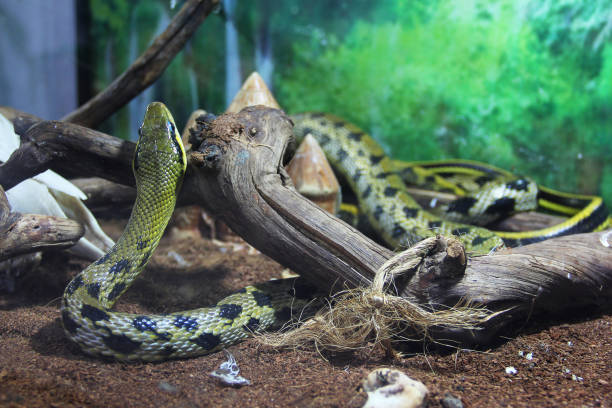
Incorporating live plants into your snake’s habitat transforms a basic enclosure into a thriving ecosystem that more closely mimics your reptile’s natural environment. Plants help maintain appropriate humidity levels through transpiration, which is particularly beneficial for species from tropical regions that require higher humidity. They also provide additional hiding spots and climbing opportunities, encouraging natural behaviors and reducing stress in captive snakes. From a practical perspective, certain plants can assist with waste management by absorbing some of the nitrogen compounds from snake excrement. Additionally, a well-planted vivarium creates visual barriers that help snakes feel more secure, potentially reducing defensive behaviors and improving their overall quality of life.
Pothos (Epipremnum aureum): The Resilient Classic
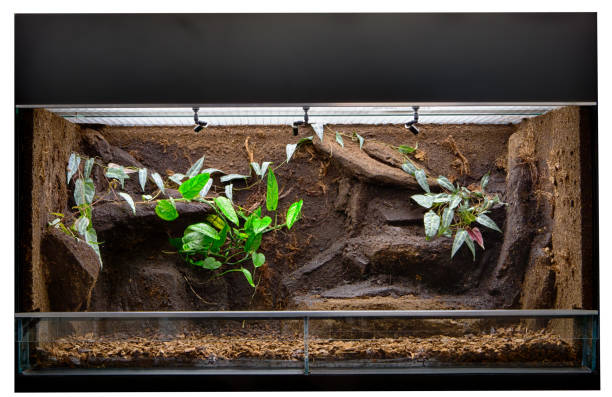
Pothos stands as perhaps the most popular plant choice for reptile enclosures due to its remarkable resilience and adaptability to various conditions. This hardy vine can tolerate the moderate to high humidity levels common in snake enclosures and will thrive in the indirect lighting typically provided in reptile setups. Its trailing growth habit creates excellent climbing opportunities and additional hiding places for your snake, while its sturdy leaves resist damage from snake movement. Pothos is particularly valuable for beginners as it can survive occasional neglect and doesn’t require specialized care beyond basic watering and occasional pruning to control growth. While pothos contains calcium oxalate crystals that can irritate mucous membranes if chewed, snakes typically avoid consuming it, making it a generally safe option for most enclosures.
Snake Plant (Sansevieria): The Ironically Perfect Match
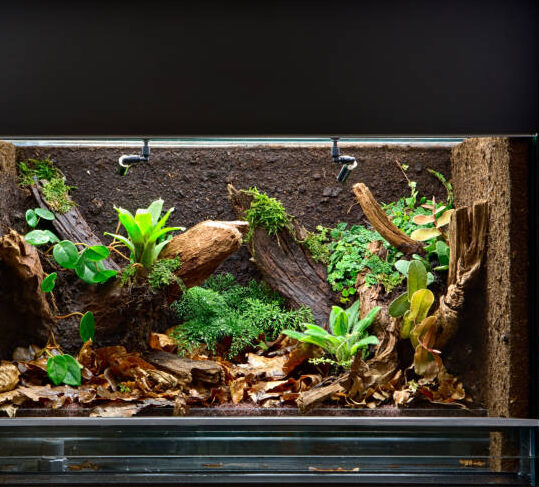
Despite its name, the snake plant isn’t named for being suitable for snake enclosures, but its upright, architectural growth pattern and extreme hardiness make it an excellent choice nonetheless. Sansevieria species thrive in conditions similar to those preferred by many arid-dwelling snake species, requiring minimal watering and tolerating fluctuating temperatures. Their stiff, upright leaves create structural elements in the enclosure that can support climbing behavior while being sturdy enough to withstand a snake’s weight. Snake plants are particularly well-suited for enclosures housing species from drier habitats like ball pythons, corn snakes, or kingsnakes. Since they store water efficiently in their thick leaves, they can help maintain appropriate humidity levels without creating overly damp conditions that might lead to scale rot or respiratory issues in desert-adapted species.
Spider Plant (Chlorophytum comosum): The Air-Purifying Option
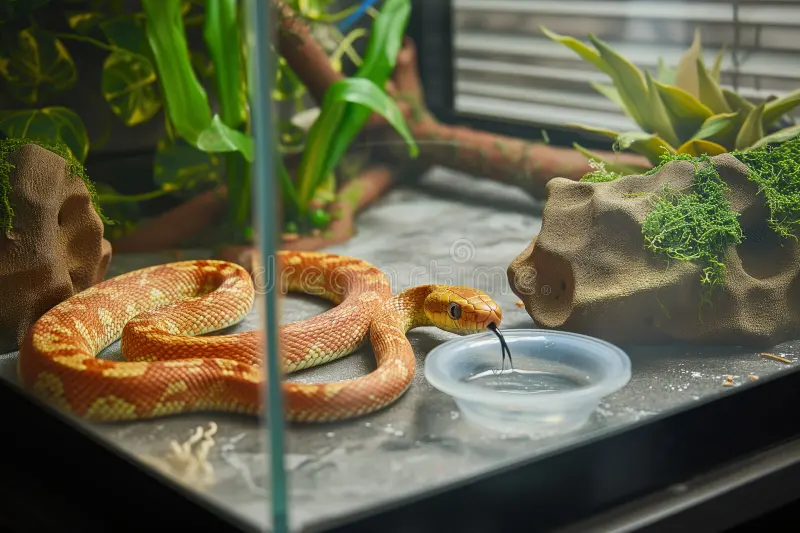
Spider plants earn their place in snake enclosures through their air-purifying properties and adaptability to vivarium conditions. These attractive plants with their arching, variegated leaves create visual interest while actively improving air quality by filtering certain toxins. Their growth habit creates natural hiding spots at soil level while their “babies” (plantlets) dangle, offering interesting tactile enrichment for curious snakes. Spider plants prefer bright, indirect light but can adapt to the moderate lighting conditions typical in snake enclosures. They’re particularly valuable in bioactive setups as they coexist well with cleanup crew organisms and contribute to the overall ecosystem balance. Additionally, spider plants are completely non-toxic to reptiles, making them a worry-free choice even if your snake occasionally shows interest in plant material.
Boston Fern (Nephrolepis exaltata): The Humidity Helper
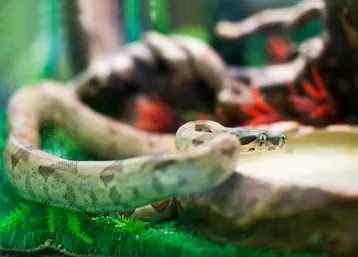
Boston ferns are ideal additions to enclosures housing snake species from tropical environments that require consistently high humidity levels. These lush, feathery plants actively increase humidity through transpiration while creating dense foliage that provides excellent hiding opportunities for shy snake species. Their natural growth pattern mimics the undergrowth of tropical forests, helping to create a more authentic habitat for rainforest-dwelling species like rainbow boas, Amazon tree boas, or certain rat snake species. Boston ferns thrive in the warm, humid conditions that tropical snakes require, creating a mutually beneficial environment. While these ferns do require more consistent moisture than some other vivarium plants, this same characteristic makes them excellent biological indicators of humidity levels—if your fern starts looking crispy, it’s a visual cue that your enclosure may be too dry for moisture-loving snake species.
Air Plants (Tillandsia species): The Soil-Free Solution
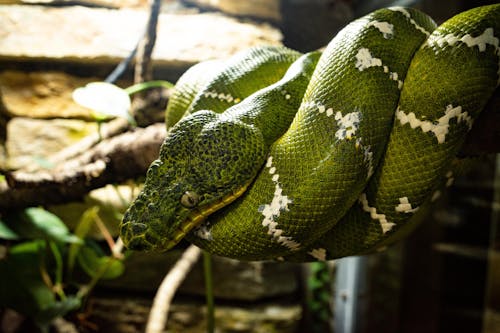
Air plants offer a unique advantage in snake enclosures as they don’t require soil to thrive, eliminating concerns about substrate contamination or ingestion. These fascinating epiphytes absorb moisture and nutrients directly from the air through specialized structures on their leaves, making them perfect for mounting on branches, cork bark, or background walls in vertical enclosures. Since they can be positioned anywhere in the habitat, they’re ideal for creating elevated points of visual interest and additional climbing structures without taking up valuable floor space. Air plants come in numerous varieties with different shapes and sizes, allowing for creative arrangement throughout the enclosure. Their minimal care requirements—occasional misting and indirect light, make them particularly suitable for keepers who want the benefits of live plants without the maintenance demands of traditional potted specimens.
Considerations Before Adding Plants to Snake Enclosures
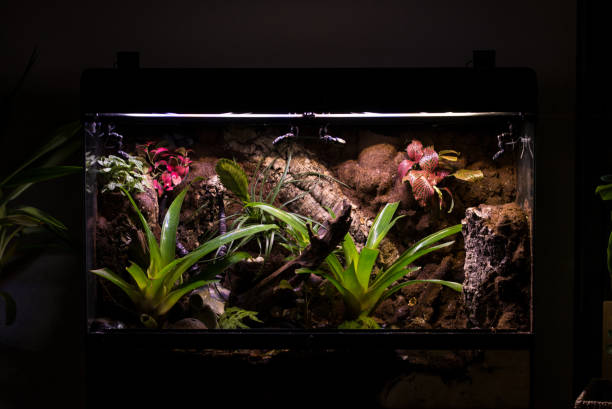
Before introducing any plant to your snake’s habitat, several important factors must be considered to ensure both the plant and the reptile thrive together. First, assess whether the plant’s light and humidity requirements align with those of your particular snake species—plants from similar geographic regions as your snake often make the best matches. Consider the adult size of both the plant and your snake to ensure the enclosure won’t become overcrowded as they grow. Examine your substrate choice carefully, as some plants require specific soil conditions that may not be compatible with reptile-safe substrates. Additionally, think about your enclosure’s lighting system—while most snakes don’t require UVB lighting, many plants do need specific light spectrums to photosynthesize effectively. Finally, have a quarantine strategy in place to ensure plants are free from pesticides, fertilizers, and potential pests before introducing them to your snake’s environment.
Planting Techniques for Snake Enclosures
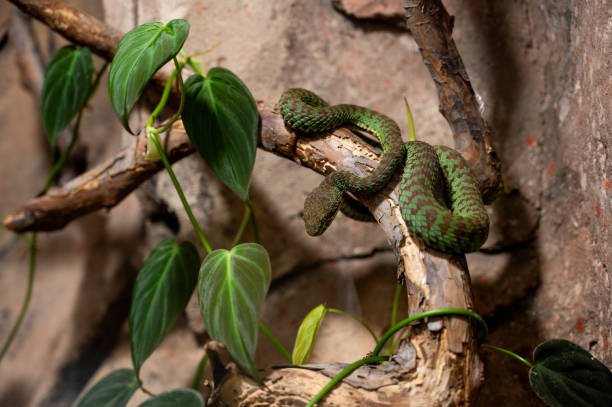
Proper planting techniques enhance both plant survival and snake safety in naturalistic enclosures. Consider using elevated planters or dedicated plant areas protected by rocks or barriers to prevent substrate disruption by burrowing snakes. For larger snake species that may crush delicate plants, position vegetation along enclosure walls or elevated on sturdy branches where the snake is less likely to rest directly on them. Always plant in containers with drainage holes to prevent root rot, and position these containers on drainage layers of expanded clay pellets or similar materials. When arranging multiple plants, consider their growth patterns and space requirements—place taller species toward the back and sides while keeping lower-growing varieties in the foreground for visual appeal. For particularly large or active snake species, consider semi-protecting newly established plants with temporary barriers until they become established enough to withstand interaction with your reptilian resident.
Plant Maintenance in Snake Environments
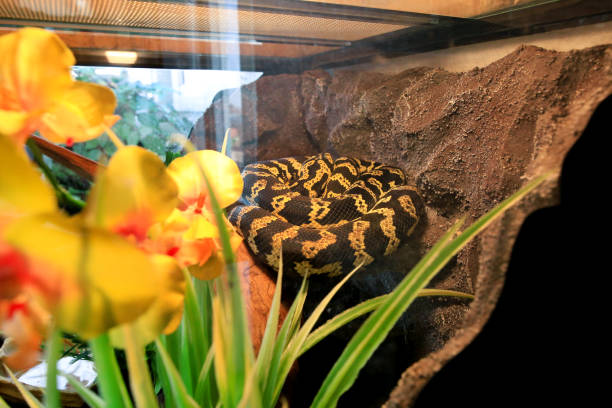
Maintaining plants in snake enclosures requires specialized care routines that accommodate both the plants’ needs and your reptile’s safety. Develop a strategic watering approach that provides adequate moisture without creating soggy conditions that could lead to snake health issues—individual plant watering or targeted misting often works better than soaking the entire enclosure. Remove yellowing or dead plant material promptly to prevent potential impaction risks if ingested by curious snakes. When fertilizing becomes necessary, use only reptile-safe, organic options at half the recommended strength, applying them only when the snake is temporarily removed from the enclosure. Periodic pruning helps manage plant growth and prevents overcrowding, but always sanitize cutting tools before and after use to prevent cross-contamination. Establish a routine visual inspection for pests or disease, looking particularly for spider mites, scale insects, or fungal issues that could potentially affect both plant and snake health.
Plants to Absolutely Avoid in Snake Enclosures
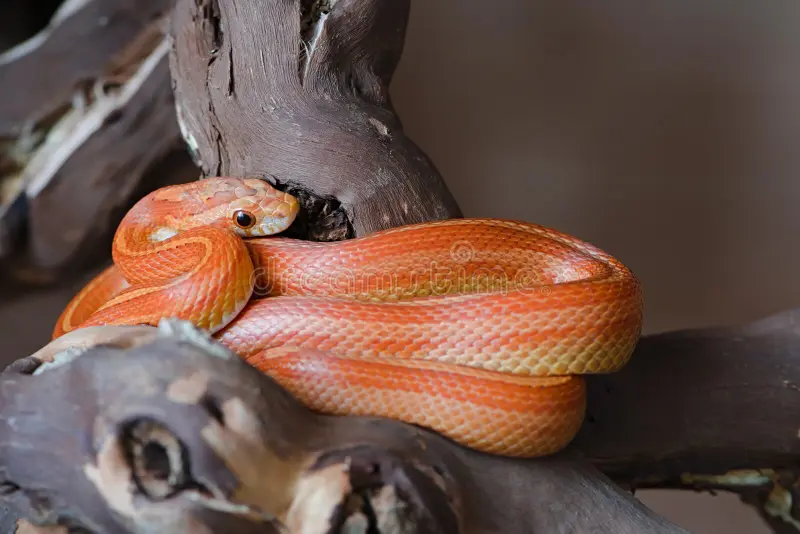
While this article focuses on safe options, it’s equally important to recognize potentially dangerous plants that should never be introduced to snake habitats. All members of the Dieffenbachia family (commonly known as dumb cane) contain calcium oxalate crystals in high concentrations that can cause severe oral irritation and tissue damage if a snake comes into contact with their sap. Similarly, philodendrons, while popular houseplants, contain toxic compounds that can cause irritation and illness. Plants from the Euphorbia genus, including many succulents and cacti, produce caustic latex that can damage a snake’s sensitive scales and eyes. Most lilies contain compounds toxic to many animal species and should be avoided entirely. Additionally, any plants treated with chemical pesticides, growth enhancers, or synthetic fertilizers pose serious health risks to reptiles and should never be introduced to their environments, even after extensive washing.
Creating a Bioactive Setup with Snake-Safe Plants
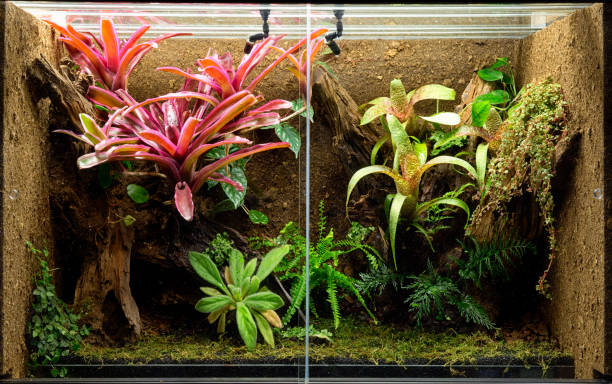
Advancing beyond simple planted enclosures, bioactive setups incorporate beneficial microorganisms and invertebrates that work alongside plants to create a mini-ecosystem requiring minimal maintenance. These sophisticated systems utilize appropriate plants as integral components that contribute to the nitrogen cycle, with plant roots providing habitat for beneficial bacteria that process waste. Snake-safe plants in bioactive setups should be strategically selected to complement the activities of cleanup crew organisms like springtails and isopods, which help break down waste and plant debris. The substrate in bioactive snake enclosures typically features a drainage layer, a barrier, and a nutrient-rich top layer that supports both plant growth and the microorganisms that maintain the system. When properly established, these systems can significantly reduce the need for complete substrate changes while creating a more naturalistic environment that stimulates natural behaviors in captive snakes.
Special Considerations for Different Snake Species
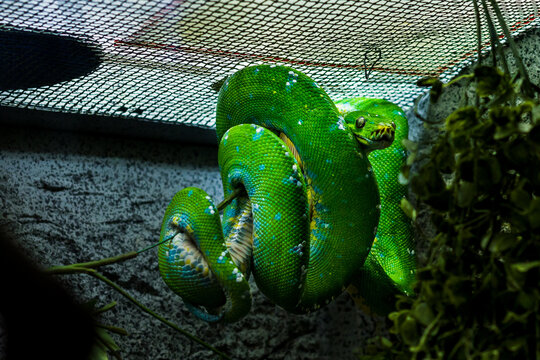
Plant selection should be tailored to the specific needs and behaviors of your snake species. Arboreal snakes like green tree pythons and emerald tree boas benefit from sturdy climbing plants attached to branches that can support their weight while providing additional hiding opportunities in the canopy. For semi-aquatic species such as water snakes or certain garter snake species, marginal pond plants can create natural transitions between water and land areas. Desert-dwelling snakes like sand boas or hognose snakes require drought-tolerant succulents (non-toxic varieties only) that won’t increase humidity beyond appropriate levels. Larger, heavier-bodied snakes such as Burmese pythons or boa constrictors need extremely robust plants, often limited to specimen-sized potted plants placed in protected corners. Burrowing species may benefit from elevated planters or plant barriers to prevent constant root disturbance while still allowing the environmental benefits of living plants.
Balancing Aesthetics and Functionality in Planted Snake Habitats
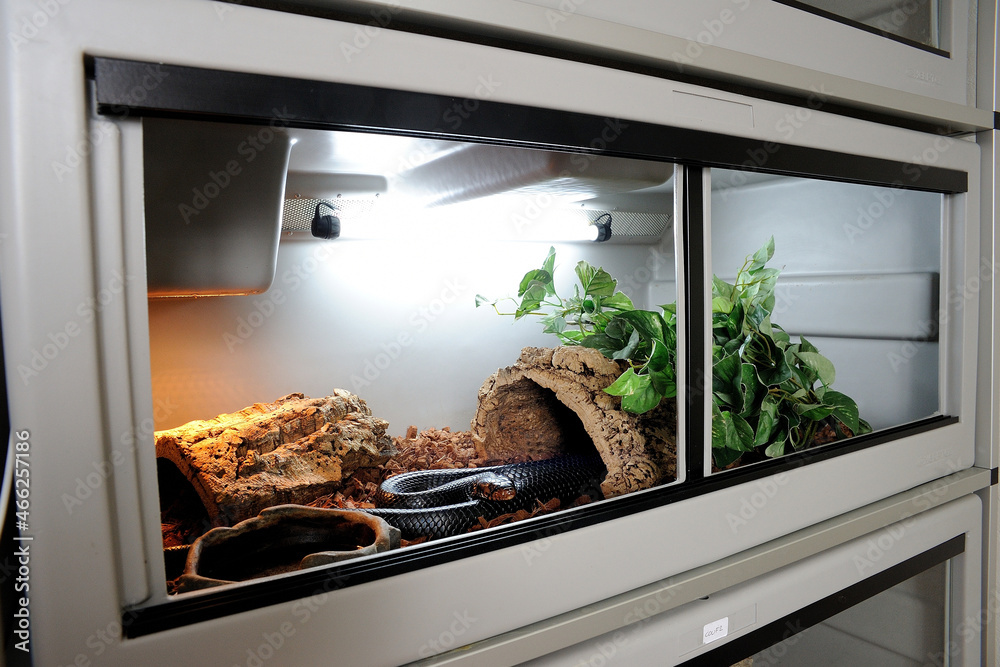
Creating a visually appealing planted snake enclosure requires thoughtful design that balances beauty with practicality. Consider the viewing angles of your enclosure when placing plants, positioning the most attractive specimens where they’ll be most visible while keeping maintenance-requiring areas accessible. Incorporate different plant textures and heights to create visual complexity that mimics natural environments—pairing the feathery fronds of ferns with the structured upright growth of snake plants, for example. Use hardscape elements like rocks, branches, and cork bark to create microhabitats where plants and snakes can thrive together, creating natural transitions between different enclosure zones. When selecting plants, consider how their growth patterns will develop over time—fast-growing species may quickly overtake slow growers without regular maintenance. Remember that the most successful planted enclosures evolve gradually, so start with a few key specimens and add more as you observe how your snake interacts with the environment.
Incorporating snake-safe plants into your reptile’s enclosure offers numerous benefits beyond mere aesthetics. From humidity regulation and waste processing to behavioral enrichment and stress reduction, the right plant selections can significantly enhance your snake’s quality of life. The five plant options highlighted—pothos, snake plant, spider plant, Boston fern, and air plants—offer excellent starting points for creating naturalistic habitats suited to different snake species’ needs. Remember that successfully planted enclosures require thoughtful planning, appropriate species selection, and ongoing maintenance tailored to both plant and animal requirements. As you develop your vivarium, you’ll discover the rewarding balance between creating a visually stunning display and providing an enriching, functional environment that supports your snake’s physical and behavioral needs. With proper research and care, a planted snake enclosure can become a thriving ecosystem that benefits both its reptilian inhabitants and the human who maintains it.




